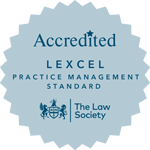Last Updated on 5th March 2025
It has been a couple of months since the Grenfell Tower disaster and with the Public Inquiry just around the corner, there are still more questions than answers. At this stage, it is believed that the fire started accidentally in a fridge-freezer on the fourth floor but swiftly spread through the 24-storey public housing tower block, killing at least 80 people, though the final death toll is unlikely to be known for a couple of years.
From various news reports, it is understood that the reason for the rapid spread of the fire is probably due to the new cladding and insulation plates which had been installed over a period of four years by the Royal Borough of Kensington & Chelsea as a retrofit for the property. In layman’s terms, a layer of insulating material was affixed to the building which was then covered with an aluminium-polyethylene cladding with an air cavity between. The problem with this arrangement is that, according to safety experts, the insulation plates should only be used with non-combustible cladding yet in this instance, both the insulation used and the cladding were flammable. Added to that, the gap between the insulation and the cladding acted like a chimney to spread the fire.
Obviously, I am not privy to all the information that the parties involved have access to nor indeed that which will be available to the Public Inquiry, so can only go on what is being reported in the news. This suggests post-disaster testing showed that both the cladding and the insulation plates failed fire safety tests. It is also understood that the Local Authority Building Control had stated in 2014 that the insulation that was used should only be used with fibre cement panels on tall buildings . Further, there is evidence to suggest that there had been intense pressure on the Royal Borough of Kensington & Chelsea to save money and as such, they chose a cheaper cladding as opposed to the more expensive non-combustible alternatives. Yes despite all of this, the cladding on Grenfell Tower was passed as suitable by a council officer.
I cannot say who is at fault – greater minds than my own will need to determine that – but looking at basic principles, one wonders how this passed inspection. The standard test in any claim for negligence is the Bolam test: has the professional acted to a standard that his peers would consider reasonable? Did he act like any other reasonable professional with similar qualifications and experience? In the Grenfell matter – as with any surveying job – would another Council Officer with the same experience have concluded that the cladding was safe given the information that was available to him? This also begs the other question of whether the Council Officer in question had access to the relevant information or had the appropriate knowledge? Did he know (or should he have known) about the previous enquiries? Should he have made it his job to make enquiries about the cladding and insulation plates? If he was holding himself out as being suitably qualified to make the decision, then I would suggest that he, like any other surveyor put in this position, should have known of the other reports.
A surveyor’s report in any house purchase is, to my mind, critical. It is there to give you peace of mind, so that if there is a problem with the property, it can be identified and either rectified prior to purchase, a reduction in the house price negotiated or allow you to walk away. You expect to be able to rely upon the professional’s judgment. If that judgment is flawed and the error should have been noted, then there should be recompense.
There can probably never be sufficient recompense for those victims of the Grenfell Tower fire nor for their families and friends and there will always be more questions than answers. One thing that I hope will come out of it is a need for professionals to be more aware of their responsibilities and, where there has been a breach of that responsibility, for there to be some sort of redress.
If you feel that you have been let down by a surveyor who should possibly have known better or indeed, by any expert, then please contact Emma Slade on 0333 888 0403 or email us at [email protected] for s free initial assessment of your case.


